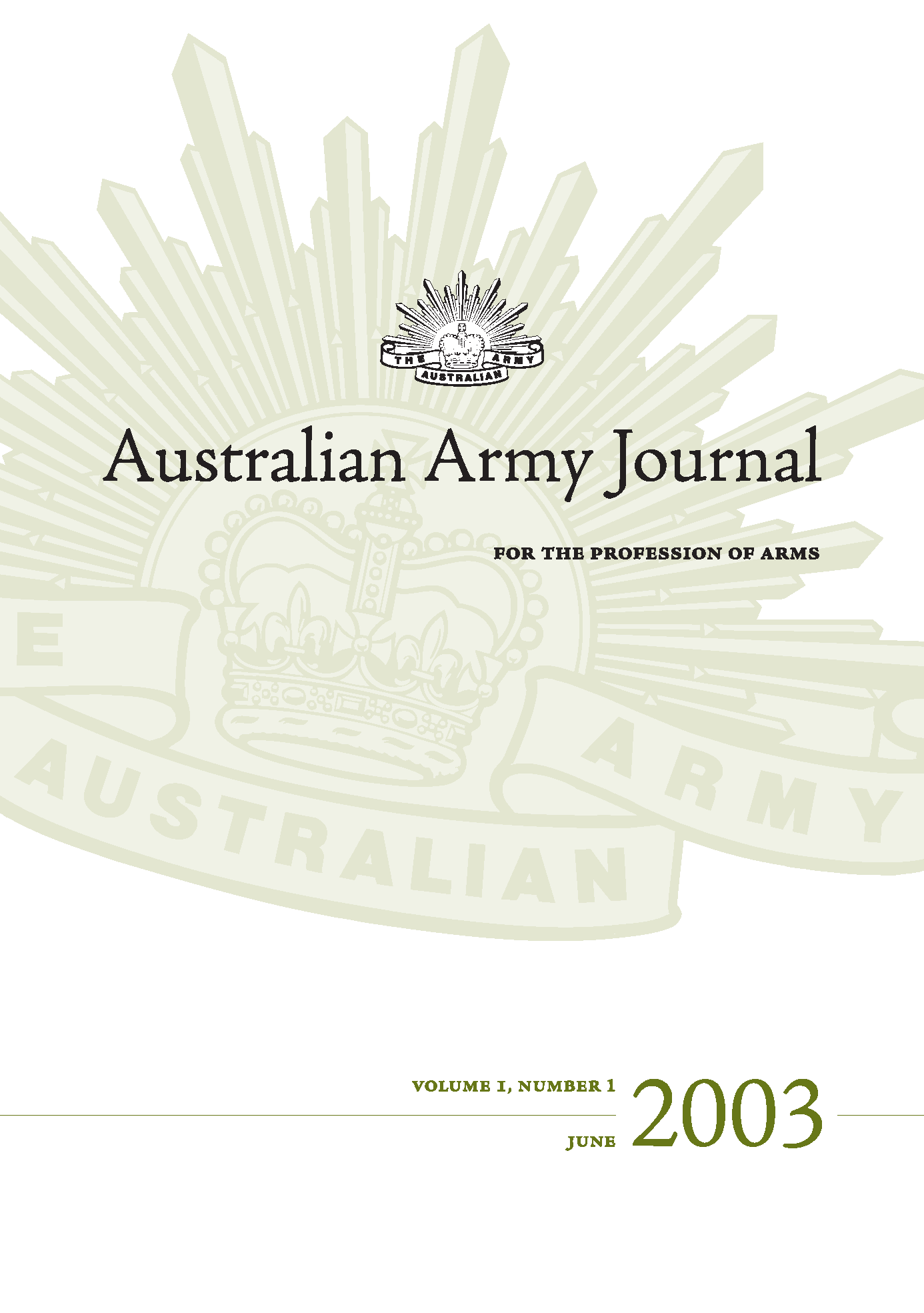In Cold Print
There are three great myths about Australia: Lasseter’s Reef exists, Phar Lap was poisoned and Australian Army officers do not write. Yet a roll call of Army officers that have written on military affairs with both elegance and influence is too long to list here. Suffice it to say that the modern tradition of writing by Australian military officers began with Federation in the pages of the Commonwealth Military Journal. In 1912, the then Lieutenant Colonel John Monash won the inaugural Gold Medal in the Commonwealth Military Journal for an essay on the American Civil War described as ‘an illuminating original article, expounded with utter clarity in a moderate scholarly manner but drawing firm conclusions’. Moreover, it must be remembered that it has been the Army that has given Australia some of its finest war studies scholars. Again, the list of names is too long to reproduce here. Any list, however, would include such Army alumni as T. B. Millar, Robert O’Neill, John Coates and David Horner. While in the world of legend, Australian Army officers care only for cold steel, in reality they have often embraced what Liddell Hart called the realm of cold print.
In this inaugural edition of the revived Australian Army Journal (AAJ), five serving officers, three retired officers and a former non-commissioned officer have put pen to paper and entered into cold print. The staff of the AAJ trust that these contributors are merely the point of a very long spear and that many more will follow their example in the future, thus giving us a rich vein of material with which to fill our journal. Our articles in the June 2003 AAJ cover a wide range of subjects including operational ideas, tactics, training, the military and the media, terrorism, and military history. In addition we provide obituaries for three distinguished soldiers, a review essay, a retrospect and several book reviews.
In Point Blank—our section for short, sharp and critical material—Brigadier John Essex-Clark (Retd) develops a critique of niche forces, arguing that the Army needs to be able to deploy larger and more self-contained forces. We also include in Point Blank a copy of Lieutenant Colonel Tim Collins’s inspirational speech to the British Army’s Royal Irish Regiment on the eve of Operation Iraqi Freedom. In our main articles, the Chief of Army, Lieutenant General Peter Leahy sets the scene by presenting his vision of how the Army will operate in a world of increasing failed states and non-state actors. He provides a candid assessment of our strengths and weaknesses in the early 21st century and outlines the Army’s commitment to manoeuvre operations in a littoral environment and to a philosophy of combined arms warfare.
The case for revising tactics of close combat and the need to maintain a combined arms capability are both well examined in two timely articles by Lieutenant Colonels David Kilcullen and Michael Krause. Colonel Andrew Smith then examines planning methodologies in responding to the new threat of mass-casualty terrorism, while Prakash Mirchandani brings his expertise as a journalist to bear in considering the role of the Army and the media. Lieutenant Colonel Stephen Tulley then looks at the lessons that the Australian Army might derive from the US experience of using combat training centres. Two interesting military history pieces by Dr Albert Palazzo and Dr Eric Villard follow, dealing with civil-military relations in the inter-war period and with US-Australian military operations in the Vietnam War, respectively.
In the AAJ’s Insights section, we present two contrasting articles. The first is by Jim Truscott and analyses the impact of early-effect forces in East Timor in 1999. The second article is a chilling eyewitness account of the 1995 Kibeho massacre as seen through the eyes of Paul Jordan, then a paramedic in the Special Air Service Regiment. In Retrospect—a section in the AAJ dedicated to reproducing interesting and notable articles from earlier Australian military journals—we present an article on military leadership by one of the 20th century’s great captains, Field Marshal Sir William Slim. This article was written while The was Governor-General of Australia. Moving on to the AAJ’s Milestones section, we publish obituaries for three of the Army’s most eminent soldiers, Major Generals Ronald Hughes and Ross Buchan, and Lieutenant Colonel Phillip Roden. Our inaugural edition also includes a review essay on the Middle East by Michael Evans, and concludes with book reviews by Major Russell Parkin, Alan Ryan, Martin Sheehan and Alexandra Siddall, and with information on the Chauvel Essay Prize, a diary section and notes for contributors.
The staff of the AAJ trust that our primary constituency, the Australian Army, will find the contents of the June 2003 edition to be of important professional value. We also hope, however, to attract interest from our retired community, from our many colleagues and well-wishers in academia and in the world of joint warfare within the Department of Defence. We are confident that the AAJ will inspire a positive intellectual reaction and a spirit of debate and reflection, leading to a rich flow of contributions for consideration by the Editorial Advisory Board. Finally, on a philosophical note, we should all remember that, while there are three things that do not come back in life—the spent arrow, the spoken word and opportunity missed—the written word lives forever.

